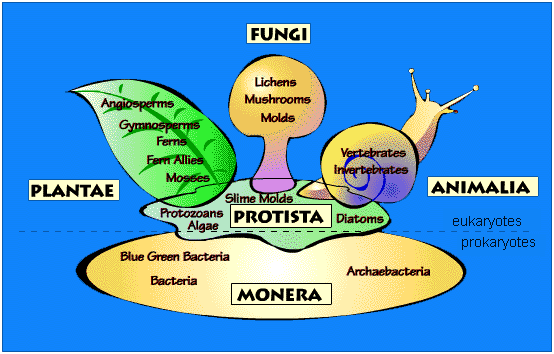Describe the Classification of Life in diversity of life?
There are at least 10 million different kinds of living organisms inhabiting Earth. Many different organisms have common features and characteristics that are distinguishable from those of other organisms. We group each separate kind of organism into a species according to the binomial system of nomenclature, which uses two Latin names to designate a separate type of organism.
This system of naming organisms was devised in the 1750's by the Swedish biologist Carolus Linnaeus. He proposed using two Latin names to identify a specific type of organism in order to avoid the confusion that would arise from the use of local common names for the same organism in different regions or countries. Since Latin was the universal scientific language at the time, scientists from any country were able to refer to an organism and be certain of its identity.
Today's classification system still uses the binomial system whereby each species is assigned to a group called a genus (pl. genera). Groupings of related genera belong to a higher category called a family. Families in turn are grouped into orders, orders are grouped into classes, and classes themselves are grouped into phyla (sn. phylum). Plants are classified slightly differently. Plant phyla are instead referred to as divisions. Phyla (divisions) - are grouped into kingdoms, the largest groupings within the classification system of living organisms. This hierarchy is shown below:
Kingdom
Phylum
Class
Order
Family
Genus
Species
Most biologists now recognize 5 different kingdoms - Monera, Protista, Fungi, Plantae (Plant), and Animalia (Animal). The major features used to distinguish between the kingdoms are cellular organization and complexity, unicellular vs. multicellular morphology, and modes of nutrition.

The difference between prokaryotic cells and eukaryotic cells represents a major divergence between life forms. The Monera Kingdom is all prokaryotes, while the four other kingdoms are composed of organisms whose cells are eukaryotic. These kingdoms are most distinguishable by their morphology. Members of the Fungi, Plant, and Animal Kingdoms, for the most part, live the majority of their lives as multicellular forms or stages. On the other hand, members of Kingdom Protista live as unicellular forms.